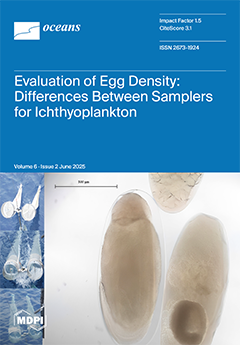Oceans, Volume 6, Issue 2 (June 2025) – 19 articles
Photo credits: the CNR IAS technicians.
Ichthyoplankton samples are essential for studying the early life stages of fish, whether to observe recruitment variability or estimate the biomass of stocks using ichthyoplankton methods. Sampling is generally impacted by the patchy distribution of plankton, the length of time required for sample collection, and weather conditions, which affect surveys at sea. Using different types of sampler nets can increase sample abundance and quality, but at the expense of time and cost. Comparing the efficiency of towing samplers for ichthyoplankton using egg density data provides critical information on their accuracy when sampling in oligotrophic waters, where sampling is more difficult due to the low egg density. This information is particularly valuable for species regularly monitored and assessed due to their economic and ecological value. View this paper
- Issues are regarded as officially published after their release is announced to the table of contents alert mailing list.
- You may sign up for e-mail alerts to receive table of contents of newly released issues.
- PDF is the official format for papers published in both, html and pdf forms. To view the papers in pdf format, click on the "PDF Full-text" link, and use the free Adobe Reader to open them.





